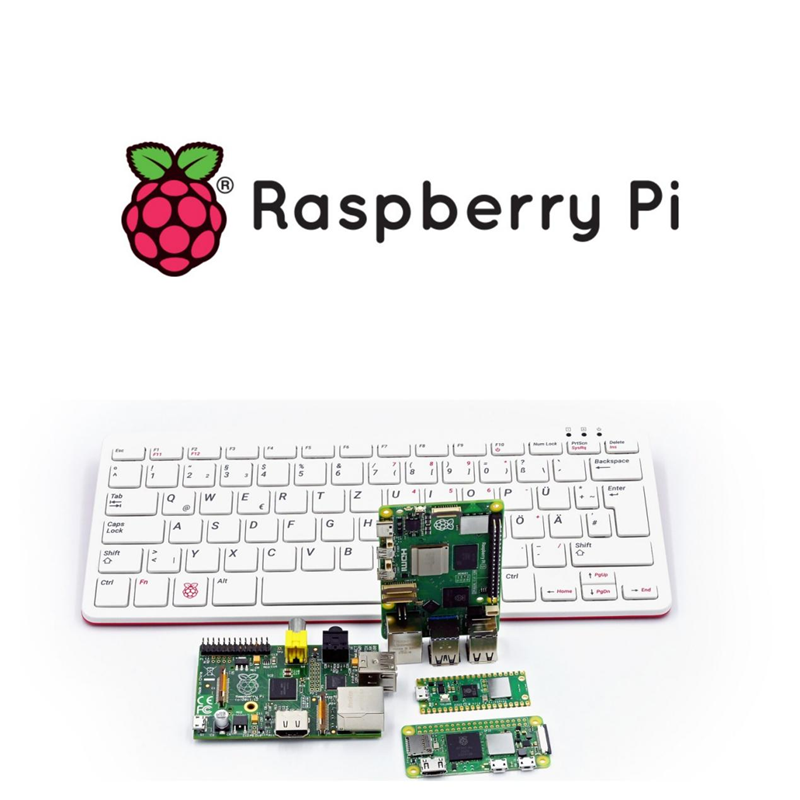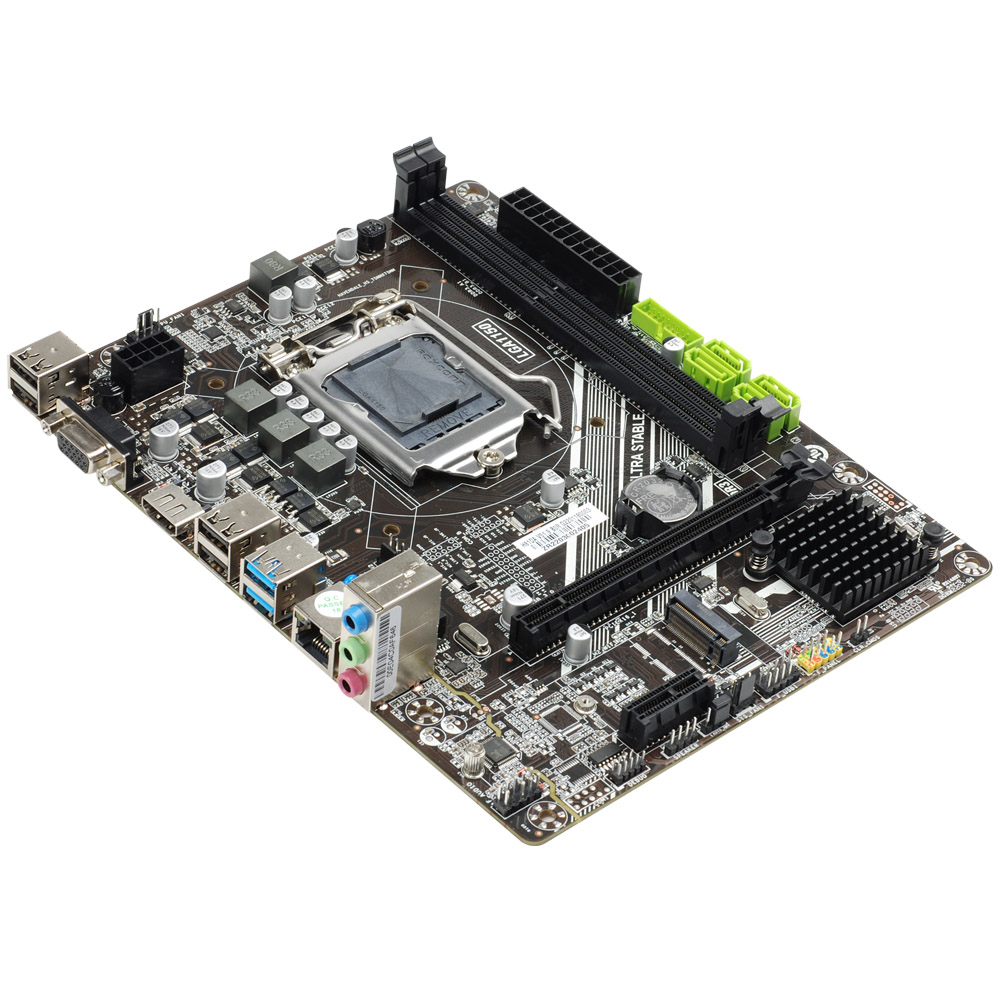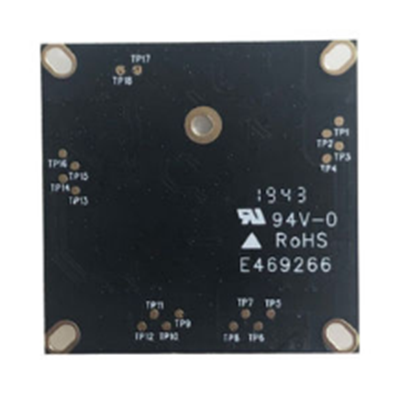One-stop Electronic Manufacturing Services, help you easily achieve your electronic products from PCB & PCBA
Raspberry Pi supplier | Industrial Raspberry Pi
- The Raspberry PI is powered by a Linux-based operating system, but also has the ability to run Windows 10 IoT Core, a version of Windows for embedded devices. It has CPU, GPU, RAM, USB interface, network interface, HDMI output, etc., can handle video, audio and other media functions, but also can connect a variety of sensors and actuators, Internet of Things projects, robot production, media center construction, server construction and other applications.
- With the iterations of various versions (e.g. Raspberry PI 1, 2, 3, 4, etc.), the performance of Raspberry PI has continued to improve to meet the needs of everything from basic learning to complex project development. Its community support is also very active, offering a wealth of tutorials, project cases, and software resources that make it easy for users to get started and get creative.
- The Raspberry Pi is a tiny computer the size of a credit card, designed and developed by the Raspberry Pi Foundation in the United Kingdom to promote computer science education, especially in schools, so that students can learn programming and computer knowledge through hands-on practice. Despite being initially positioned as an educational tool, Raspberry PI quickly won over computer enthusiasts, developers, do-it-yourself enthusiasts and innovators around the world due to its high degree of flexibility, low price and powerful feature set.
- The Raspberry PI is powered by a Linux-based operating system, but also has the ability to run Windows 10 IoT Core, a version of Windows for embedded devices. It has CPU, GPU, RAM, USB interface, network interface, HDMI output, etc., can handle video, audio and other media functions, but also can connect a variety of sensors and actuators, Internet of Things projects, robot production, media center construction, server construction and other applications.
- With the iterations of various versions (e.g. Raspberry PI 1, 2, 3, 4, etc.), the performance of Raspberry PI has continued to improve to meet the needs of everything from basic learning to complex project development. Its community support is also very active, offering a wealth of tutorials, project cases, and software resources that make it easy for users to get started and get creative.
We work with authorized agents of the Raspberry PI to offer the full range of Raspberry PI products.
- The Raspberry Pi 4 Model B (Raspberry Pi 4 Model B) is the fourth generation of the Raspberry PI family, a high-performance, low-cost microcomputer. It comes with a 1.5GHz 64-bit quad-core ARM Cortex-A72 CPU (Broadcom BCM2711 chip) that significantly boosts processing power and multitasking performance. The Raspberry PI 4B supports up to 8GB of LPDDR4 RAM, has a USB 3.0 port for faster data transfer and, for the first time, introduces a USB Type-C power interface for faster charging and power.
- The model also features dual Micro HDMI interfaces that can simultaneously output 4K resolution video to two monitors, making it ideal for efficient workstations or multimedia centers. Integrated wireless connectivity includes 2.4/5GHz dual-band Wi-Fi and Bluetooth 5.0/BLE, ensuring flexible network and device connectivity. In addition, the Raspberry PI 4B retains the GPIO pin, allowing users to connect a variety of sensors and actuators for extended development, making it ideal for learning programming, iot projects, robotics and a variety of creative DIY applications.
- The Raspberry Pi 5 is the latest flagship in the Raspberry PI family and represents another major leap forward in single-board computing technology. Raspberry PI 5 is equipped with an advanced 64-bit quad-core Arm Cortex-A76 processor at up to 2.4GHz, which improves processing performance by 2-3 times compared to Raspberry PI 4 to meet higher levels of computing needs.
- In terms of graphics processing, it has a built-in 800MHz VideoCore VII graphics chip, which significantly enhances graphics performance and supports more complex visual applications and games. The newly added self-developed South-bridge chip optimizes I/O communication and improves the overall efficiency of the system. The Raspberry PI 5 also comes with two four-channel 1.5Gbps MIPI ports for dual cameras or displays, and a single-channel PCIe 2.0 port for easy access to high-bandwidth peripherals.
- In order to facilitate users, the Raspberry PI 5 directly marks the memory capacity on the motherboard, and adds a physical power button to support one-click switch and standby functions. It will be available in 4GB and 8GB versions for $60 and $80, respectively, and is expected to go on sale at the end of October 2023. With its superior performance, enhanced feature set, and still-affordable price, this product provides a more powerful platform for education, hobbyists, developers, and industry applications.
- Raspberry PI Compute Module 3 (CM3) is a version of Raspberry PI designed for industrial applications and embedded systems. It is an upgrade to the CM1 and uses the same processor as the Raspberry PI 3, the Broadcom BCM2837, at 1.2GHz, which significantly improves CPU performance and is about 10 times that of the original CM1. The CM3 comes with 1GB of RAM and offers more flexible storage options in two versions: the standard version comes with 4GB of eMMC flash, while the Lite version removes eMMC flash and offers an SD card expansion interface instead, allowing users to customize storage solutions as needed.
- The CM3's core module is small enough to be embedded directly into a custom circuit board, making it ideal for projects that are space-constrained or require specific I/O configurations. It also supports a variety of high-speed interfaces, including GPIO, USB, MicroUSB, CSI, DSI, HDMI and Micro-SD, by loading different carriers, it can easily expand its functionality and adapt to different application scenarios, such as industrial control, digital signage, iot projects and more. The CM3 maintains the cost performance characteristics of the Raspberry PI series while enhancing stability and reliability in industrial environments.
- Raspberry PI Compute Module 4 (CM4) is the fourth generation of the Raspberry PI family of compute modules, optimized for embedded applications and industrial design. The CM4 offers significant performance improvements and greater flexibility than its predecessor, the CM3+. It integrates the more powerful Broadcom BCM2711 processor, which uses the quad-core ARM Cortex-A72 architecture, clocking up to 1.5GHz and supporting 64-bit computing, significantly increasing processing speed and multitasking capabilities.
- The CM4 is available in a variety of memory configurations, ranging from 1GB to 8GB LPDDR4 RAM, to meet the needs of different application scenarios. In terms of storage, both the standard version with eMMC storage and the Lite version with or without built-in storage are available. Users can choose a storage solution based on project requirements. This module also introduces a PCIe interface that supports Gen2x1 speeds, making it possible to access high-speed expansion devices such as SSDS, wireless network cards (including 5G modules), or GPU-accelerated cards.
- The CM4 maintains a modular design that allows docking to the carrier board via high-density connectors to extend a variety of interfaces including GPIO, USB (including USB 3.0), Ethernet (Gigabit or 2.5G), Wi-Fi, Bluetooth 5.0, DisplayPort, and HDMI. These characteristics make it an ideal platform for everything from industrial iot, edge computing, digital signage to high-end custom projects. Its compact size and powerful performance, combined with the rich resources and community support of the Raspberry PI ecosystem, make the CM4 the solution of choice for developers and manufacturers.
- The Raspberry PI Compute Module 4 IO Board is an extension backboard specifically designed for Compute Module 4 (CM4) to provide the necessary external interfaces and extension capabilities to transform the CM4 core module into a full-featured development board or integrate directly into the final product. The IO board is connected to the CM4 module through a high-density interface, exposing the powerful capabilities of the CM4
- The Raspberry PI Pico is a low-cost, high-performance microcontroller development board launched by the Raspberry PI Foundation in 2021 to fill the gap in the Raspberry PI family of microcontrollers. Pico is based on Raspberry PI's own RP2040 chip design, which integrates a dual-core ARM Cortex-M0+ processor running at 133MHz, with 264KB of SRAM and 2MB of flash memory.
- The Raspberry Pi Sense HAT is a versatile expansion board designed specifically for the Raspberry Pi to provide environmental awareness and interaction capabilities for education, experimentation, and a variety of creative projects. Sense HAT has the following key features:
- 8x8 RGB LED matrix: Can be used to display text, graphics or animation to add visual feedback to the project.
- Five-way joystick: A joystick similar to a gamepad that contains a center button and four D-keys that can be used for game control or as a user input device.
- Built-in sensors: Integrated gyroscope, accelerometer, magnetometer (for motion tracking and navigation), as well as temperature, air pressure and humidity sensors to monitor environmental conditions and physical motion.
- Software support: The official provides a rich software library that supports easy access to all hardware functions using languages such as Python, making programming and data reading simple and fast.
- Educational tools: Often used in STEM (science, technology, engineering, and math) education to help students learn programming, physics principles, and data analysis through hands-on learning.
- The Raspberry Pi Zero 2 W is a microcomputer board introduced by the Raspberry Pi Foundation as an upgraded version of the Raspberry PI Zero W, released in October 2021. Its main features include:
- Processor upgrade: The upgrade from the single-core ARM11 to the quad-core Cortex-A53 processor (BCM2710A1 chip) significantly improves computing performance and runs faster.
- Keep it small: The compact size of the Zero series continues for embedded projects and space-constrained applications.
- Wireless connectivity: Built-in wireless local area network (Wi-Fi) and Bluetooth functions, like Zero W, support wireless Internet access and connection to wireless devices.
- High Performance and low power consumption: Combine high performance with the Raspberry PI's consistent low power characteristics for mobile or battery-powered projects.
- GPIO Compatibility: Maintains compatibility with the Raspberry PI family's 40-pin GPIO interface for easy access to a variety of expansion boards and sensors.
- The Raspberry Pi Zero W is one of the most compact and affordable members of the Raspberry PI family, released in 2017. It is an upgraded version of the Raspberry Pi Zero, and the biggest improvement is the integration of Wireless capabilities, including Wi-Fi and Bluetooth, hence the name Zero W (W stands for Wireless). The following are its main features:
- Size: One-third the size of a credit card, extremely portable for embedded projects and space-constrained environments.
- Processor: Equipped with BCM2835 single-core processor, 1GHz, equipped with 512MB RAM.
- Wireless connectivity: Built-in 802.11n Wi-Fi and Bluetooth 4.0 simplify the process of wireless Internet access and Bluetooth device connection.
- Interface: mini HDMI port, micro-USB OTG port (for data transfer and power supply), dedicated micro-USB power interface, as well as CSI camera interface and 40-pin GPIO head, support for a variety of extensions.
- Wide range of applications: Due to its small size, low power consumption and comprehensive features, it is often used in Internet of Things projects, wearable devices, educational tools, small servers, robot control and other fields.
- The Raspberry Pi PoE+ HAT is an expansion board designed specifically for the Raspberry PI that provides power and data transmission over an Ethernet cable, following the IEEE 802.11at PoE+ standard. Key features of PoE+ HAT include:
- Integrated power and data transmission: Allows the Raspberry PI to receive power over a standard Ethernet cable while high-speed data communication eliminates the need for an external power adapter.
- High power support: Compared to traditional PoE, PoE+ HAT can provide up to 25W of power to meet the higher power requirements of the Raspberry PI and its peripherals.
- Compatibility: Designed to work with specific models of the Raspberry PI family, ensuring good physical and electrical compatibility and ease of installation and use.
- Simplified cabling: Especially suitable for installation in environments where access to electrical outlets is difficult or where you want to reduce clutter with cables, such as ceiling-mounted monitoring systems, digital signage or IoT project nodes.
- Heat dissipation design: With high power applications in mind, PoE+ HAT usually includes an effective heat dissipation solution to ensure that the Raspberry PI can still operate stably even when receiving higher power inputs.
Write your message here and send it to us
Products categories
-

Phone
-

E-mail
-

Whatsapp
-

Skype
-

Skype
-

Skype



















